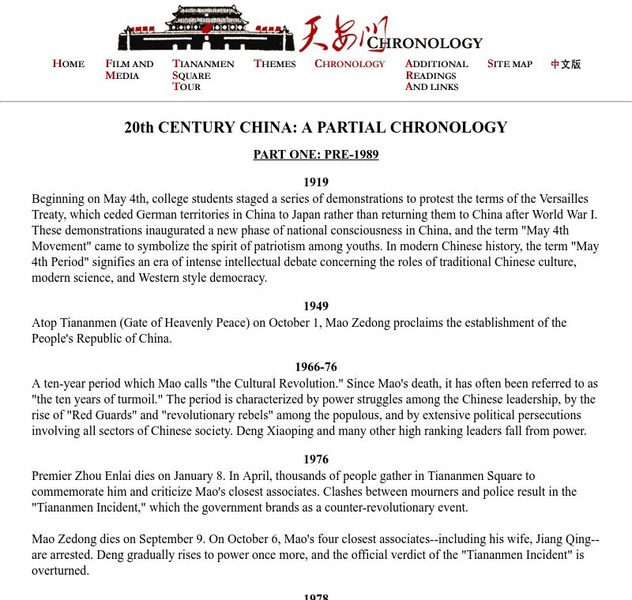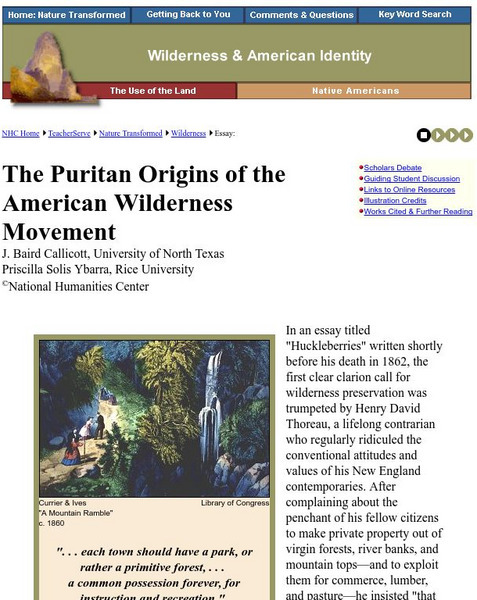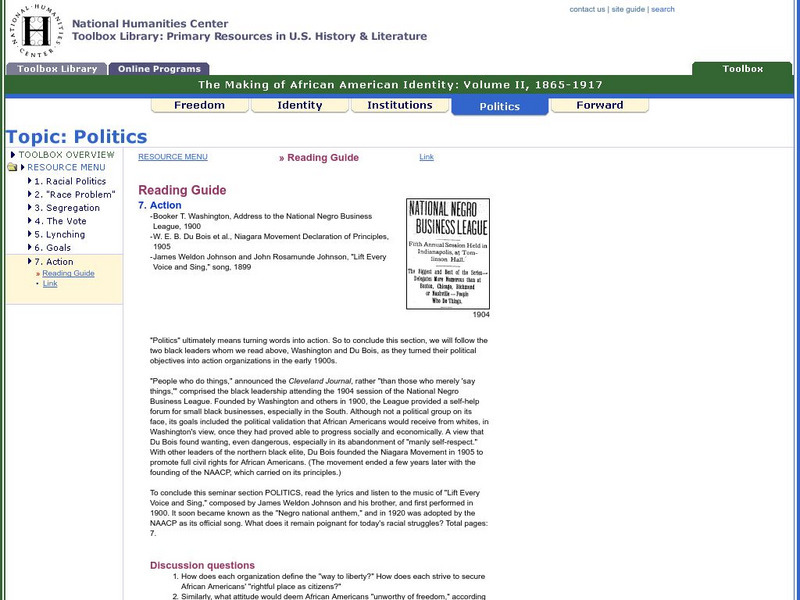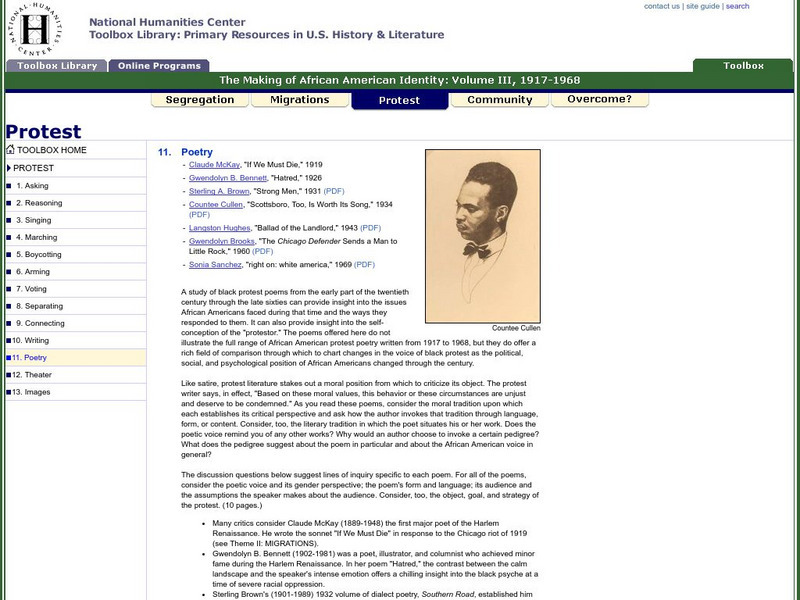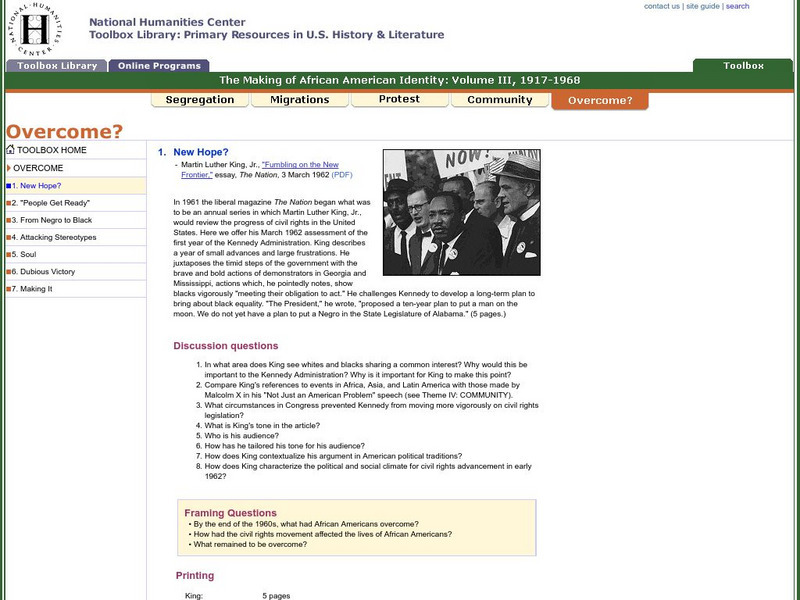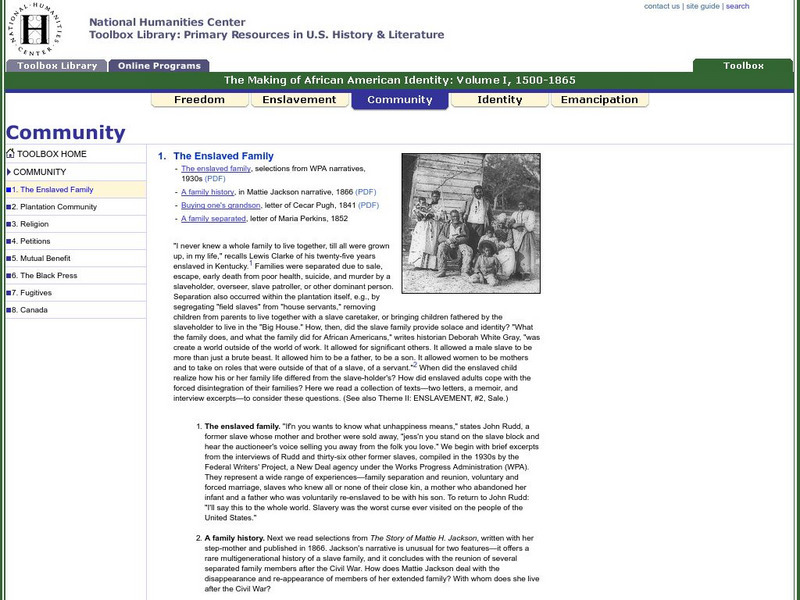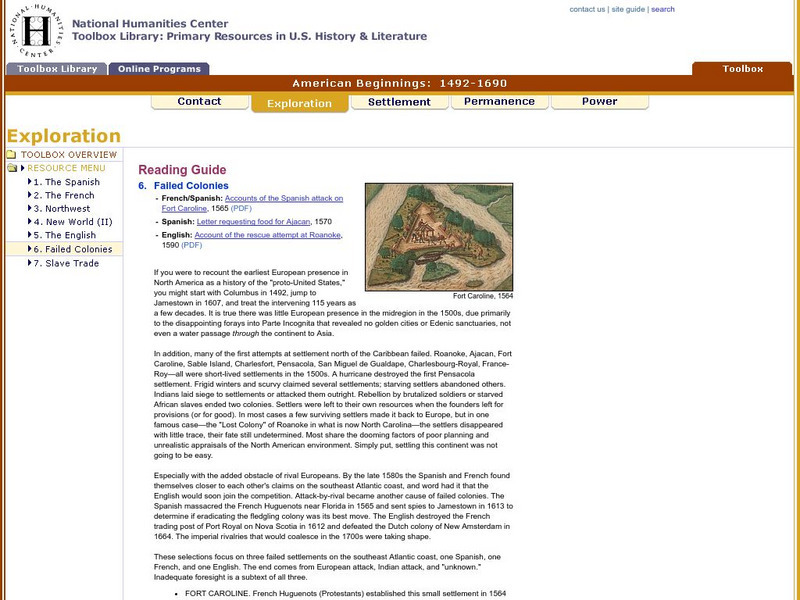American Association for the Advancement of Science
American Association for the Advancement of Science: The Oldest Known Campfires?
A short article reporting on the discovery at an archaeological dig of an apparent human-controlled fire from 790,000 years ago. This early human would have been hominids.
National Health Museum
Nhm: Restriction Maps to Cladograms Lesson
This lesson plan requires students to analyze DNA restriction maps to determine the differences in the sequence for several primates and humans. They then use the information to create a cladogram.
PBS
Pbs Learning Media: Riddle of the Bones
At the online companion Web site of "Evolution," the seven-episode series on PBS, piece together clues to how one of our early ancestors looked as you examine images from four significant fossil finds of Australopithecus afarensis.
Khan Academy
Khan Academy: Dante's Divine Comedy in Late Medieval and Early Renaissance Art
Because of Dante's image-driven descriptions in "Divine Comedy", many artists have sought to illustrate his text through a wide variety of media. This essay will look at two outstanding examples of how Dante's words fed the creative...
Khan Academy
Khan Academy: Early Photography: Niepce, Talbot and Muybridge
Photography is a controversial fine art medium, simply because it is difficult to classify-is it an art or a science? Nineteenth-century photographers struggled with this distinction, trying to reconcile aesthetics with improvements in...
Other
Center for Asian American Media: Chronology of the Pro Democracy Movement
A detailed timeline starts with events in the early part of the 20th century and then covers the year 1989 during which the massive protests in Tiananmen Square took place.
Curated OER
Smithsonian Nmnh: What Does It Mean to Be Human, Human Evolution Evidence
What does it mean to become human? This brilliant and detailed resource examines early man's behavior, including information on stone tools he used, burial, clothing, and shelter. Find information on genetics including human skin color...
Khan Academy
Khan Academy: Foraging
An article discussing the evolution of humans and animals relying on nature for their food. Learn about how humans have used the natural environment to hunt and gather food.
Khan Academy
Khan Academy: Lucy and the Leakeys
An article that discusses the Leakey's investigations to find human origins in Africa.
University of Oxford (UK)
Pitt Rivers Museum: Methods of Making Fire
An informative article summarizing the history of fire, how humans have used it and the various methods humans have used to start a fire.
National Humanities Center
National Humanities Center: Toolbox Library: First Arrivals, American Beginnings: 1492 1690
Numerous visual images of artifacts from English settlements at Jamestown and at Plymouth, and from Spanish settlement in Hispaniola, and three original accounts of each of those early settlements that describe the possibilities and the...
National Humanities Center
National Humanities Center: Teacher Serve: Witchcraft in Salem Village
This National Humanities site gives a brief description of "This notorious episode in the history of early New England," and some ideas for presenting the topic of witchcraft to students.
National Humanities Center
National Humanities Center: Teacher Serve: Wilderness: The Puritan Origins of the American Wilderness Movement
Thoughtful history from the National Humanities Center of important figures in the early conservation movement in America: Bradford, Morton, Edwards, Thoreau, Emerson, Muir, and Leopold. Follow-up study suggestions include students...
Other
Kim's Korner: The Educator's Reference Desk
A great cross-curricular lesson that focuses on humanity in the time of the Stone Age. Students will study prehistoric cave paintings and then produce their own paintings as part of a large mural.
National Humanities Center
National Humanities Center: Toolbox Library: Action, Making of African American Identity: V. 2
An address, a declaration of principle, and the Black National Anthem illustrating differing approaches to political action. The texts examine how Washington and Du Bois turned their political objectives into action organizations in the...
National Humanities Center
National Humanities Center: Toolbox Library: Making of African American Identity: The Promised Land?
A short story and a painting illustrating African American perceptions of Northern cities. Rudolph Fisher's short story "The City of Refuge" and William H. Johnson's painting Moon over Harlem offer insight into life within the black...
National Humanities Center
National Humanities Center: Toolbox Library: Poetry, Making of African American Identity: V. 3
This study of black protest poems from the early part of the twentieth century through the late sixties can provide insight into the issues African Americans faced during that time and the ways they responded to them. Works from seven...
National Humanities Center
National Humanities Center: Toolbox Library: New Hope?, Making of African American Identity: V. 3
An article that critiques the early civil rights efforts of the Kennedy administration. It explores the obstacles the civil rights movement had to overcome and the movement's effect on the lives of African Americans.
National Humanities Center
National Humanities Center: Toolbox Library: The Enslaved Family, Making of African American Identity: Vol. 1
This site offers two letters and a memoir from the mid-nineteenth century, and interviews from the early-twentieth century, about the importance and the roles of enslaved families.
National Humanities Center
National Humanities Center: Toolbox Library: Mutual Benefit, Making of African American Identity: V. 1
Four documents establishing black mutual assistance and self-help organizations from the late-eighteenth and early-nineteenth centuries. A link to each document is provided.
National Humanities Center
National Humanities Center: Toolbox Library: Emancipation: Abolition
Speeches, songs, letters, and pamphlets from the early- and mid-nineteenth century promoting the abolition of slavery and emancipation of enslaved peoples are provided within this resource.
National Humanities Center
National Humanities Center: Toolbox Library: De Tocqueville, Triumph of Nationalism: America, 1815 1850
Three essays from the famous French visitor to America, Alexis de Tocqueville, in which he examines how religion in early nineteenth century America supported democratic tendencies.
National Humanities Center
National Humanities Center: Toolbox Library: African Americans, the Gilded and the Gritty: 1870 1912
A speech by Mary Church Terrell, a letter by Booker T. Washington, a letter by W.E.B. DuBois, and the Niagara Movement's Declaration of Principles describe African American civil rights strategies in the early-twentieth century.
National Humanities Center
National Humanities Center: Toolbox Library: Failed Colonies, American Beginnings: 1492 1690
Three European accounts of the disappointments, challenges, and outright failures to establish early successful colonial outposts in North America.
Other popular searches
- Timeline of Early Man
- Early Man Neanderthal
- Time Line of Early Man
- Powerpoint Early Man
- Cultures of Early Humans
- History Early Man
- Social Studies Early Humans
- Early Humans Wanted Poster
- Early Man Rock Art
- Early Humans Africa
- Early Man Africa
- Timelines of Early Man







